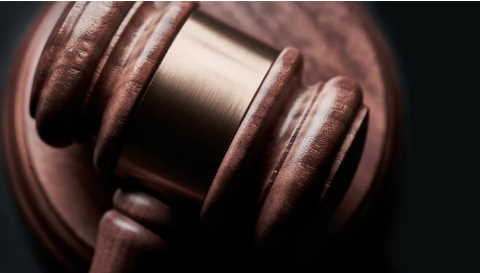
“NYU Workers Say Judge Conflicted Out of Retirement Plan Suit” —
- “New York University workers told the Second Circuit that they’re entitled to a new trial in their case over the school’s retirement plans because the presiding judge’s ties to the school disqualified her from hearing the case.”
- “The workers, in addition to challenging Forrest’s legal analysis in her 2018 ruling in favor of NYU, argued that a conflict of interest disqualified Forrest from hearing the case. They pointed out that 43 days after ruling for NYU, Forrest left the bench and rejoined the law firm Cravath Swaine & Moore LLP, where firm chairman Evan Chesler is a key member of NYU’s board of directors.”
“Manhattan judge rules in favor of lawyers who donated to his campaign – and it’s all legal” —
- “The silver-maned lawyer announced the victory on his law firm’s website: A win saved his clients $130 million. Not included in that broadband boast was that the attorney, Marc Kasowitz, and his associate donated $10,000 to the presiding judge’s campaign eight years earlier.”
- “Now lawyers for Drexel-Billet’s former spouse, Bradford, are questioning why Manhattan Supreme Court Judge Michael Katz remained on the case.”
- “A spokesman for the state Office of Court Administration suggested Katz’s behavior was above board, noting that he followed state regulations dictating an ‘independent person’ handle contributions.”
“What to do when your adversary was the Judge’s clerk?” —
- “Most of the reported cases involving judges and former clerks deal with the situation where the clerk was employed while a matter was pending and later joins a firm involved in the same matter or representing one of the parties. That law is well-settled.”
- “But suppose the issue is not whether the case was in front of the judge in some fashion when your adversary was clerking; what if the issue is more thorny? Do they still have a close enough relationship to put your client at a perceived or actual disadvantage?”
- “After reading about In Re: Gizella Pozsgai, case number 19-3872 in the U.S. Court of Appeals for the Third Circuit, you have to consider raising the delicate issue before the judge and the adversary and hope for honest and complete answers.”
- “The scrutiny began because the judge gave an interview circulated on the internet describing her close personal and social relationships with former law clerks, including the AUSA. She had made similar comments in public remarks and in legal publications. She had pictures of events in her chambers of her and former clerks, including the AUSA, seen by counsel during a conference. In denying the first recusal motion along with deciding other motions, she simply inserted the denial in a footnote without analysis.”
- “The case is heading to the Third Circuit and bears watching. In the meantime, if you clerked and have a case assigned to your judge, promptly notify your adversary of the details of the clerkship and your present relationship with the judge.”
- “There is no hard and fast rule addressing the question of whether a judge should allow a former clerk to appear before the judge in any matter. Some judges wait 6 months, some wait a year, some wait two years before allowing a clerk to appear. Some districts or vicinages choose a time period by consensus.”
